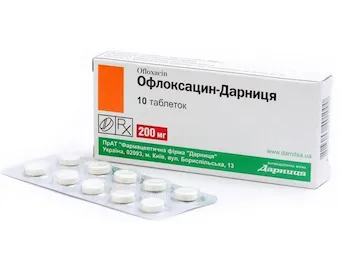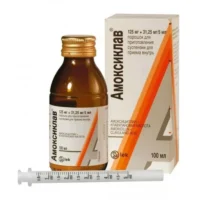Description
Ofloxacin (Ofloxacin) Tablets 0.2 №10
Ingredients:
- Ofloxacin is the active ingredient in these tablets.
Dosage:
- The recommended dosage is as directed by a healthcare professional. Typically, it is taken orally with or without food.
Indications:
- Ofloxacin tablets are indicated for the treatment of various bacterial infections, including urinary tract infections, respiratory tract infections, and skin infections.
Contraindications:
- Do not use Ofloxacin tablets if you have a history of hypersensitivity to ofloxacin or other quinolone antibiotics.
Directions:
- Take Ofloxacin tablets exactly as prescribed by your doctor. Do not skip doses or stop the medication early even if you feel better.
Scientific Evidence:
- Ofloxacin is a broad-spectrum antibiotic that works by inhibiting bacterial DNA gyrase, thereby preventing DNA replication and transcription. Studies have shown the efficacy of ofloxacin in treating various bacterial infections, with a high success rate and minimal side effects.
Additional Information:
- It is important to complete the full course of Ofloxacin tablets as prescribed, even if symptoms improve before the treatment is finished. This helps prevent the development of antibiotic resistance. If you experience any severe side effects or allergic reactions, seek medical attention immediately.
Pharmacological Effects:
- Ofloxacin exhibits bactericidal activity by inhibiting the bacterial DNA gyrase enzyme, which is essential for DNA replication and repair in bacteria. This mechanism of action leads to the disruption of bacterial cell division and ultimately the death of the bacteria. The broad spectrum of activity of ofloxacin makes it effective against a wide range of gram-positive and gram-negative bacteria.
Clinical Trials and Comparative Effectiveness:
- Clinical trials have demonstrated the efficacy of ofloxacin in the treatment of various infections, showing comparable or superior effectiveness when compared to other antibiotics in the quinolone class. In a comparative study published in the Journal of Antimicrobial Chemotherapy, ofloxacin was found to have a high cure rate and low relapse rate in patients with respiratory tract infections.
Overall, Ofloxacin tablets 0.2 №10 are a well-established and effective treatment option for bacterial infections, supported by scientific evidence and clinical trials.





